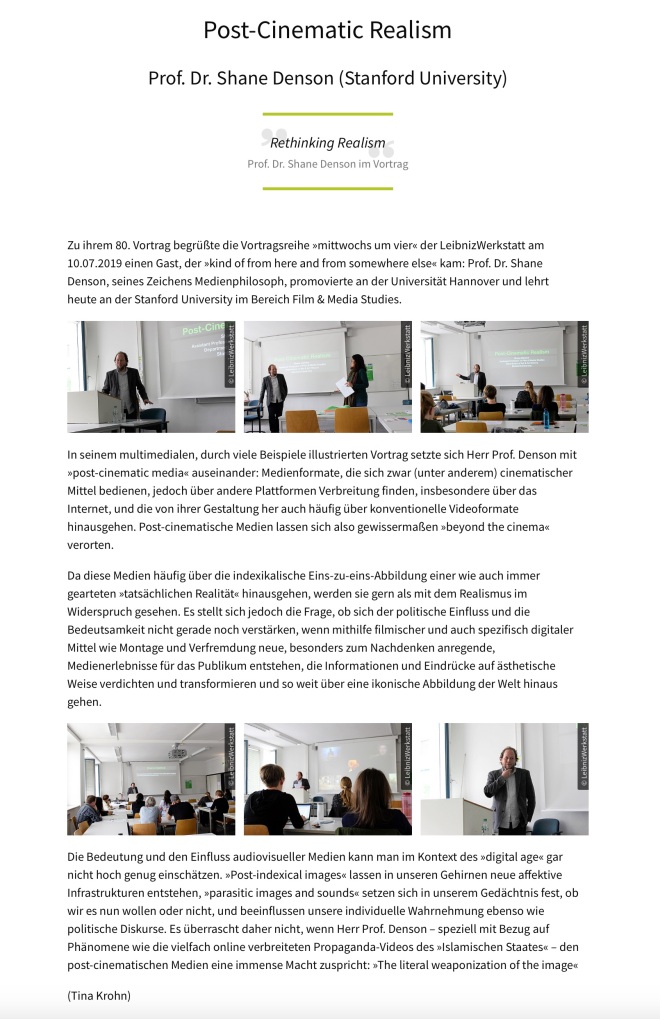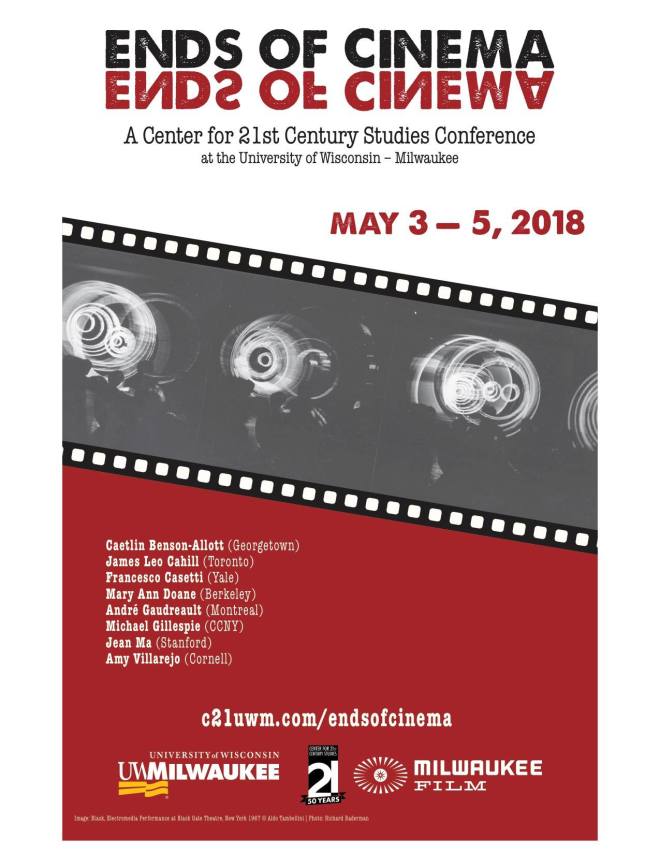
The Fórum Internacional Cinemática III, organized by Giselle Gubernikoff, Edson Luiz Oliveira, and Daniel Perseguim of the Universidade de São Paulo, is taking place online from April 13-15, 2021. Dedicated this year to forms of documentary and “the real,” the conference will feature three plenary talks by Steven Shaviro (April 13), me (April 14), and Selmin Kara (April 15).
My talk, titled “Documenting the Post-Cinematic Real,” draws on a line of questioning about computational media and realism that I explore in the latter half of chapter 5 in Discorrelated Images:
“In its classical formulation, cinematic realism is based in the photographic ontology of film, or in the photograph’s indexical relation to the world, which allegedly grants to film its unique purchase on reality; upon this relation also hinged, for many realist filmmakers and theorists, the political promise of realism. Digital media, meanwhile, are widely credited with disrupting indexicality and instituting an alternative ontology of the image, but does that mean that realism as a potentially political power of connection with the world is dead? If we consider the extent to which reality itself is shaped and mediated through digital media today, the question begins to seem strange. As I will demonstrate with reference to a variety of moving-image texts dealing with drone warfare, online terrorism recruitment, and computationally mediated affects, post-cinematic media might in fact be credited with a newly intensified political relevance through their institution of a new, post-cinematic realism. As a result, the question of “documenting the post-cinematic real,” which any contemporary theory of documentary must raise, will necessarily take us beyond the documentary as it is traditionally understood; it will take us into spaces of the computer desktop, of online and offline subjectivities and collectives, and of post-indexical technologies and environments. How can these spaces, which resist traditional coordinates of cinematic realism, be documented?”
Here are the links to view the plenary talks:
Steve Shaviro, “The Ontology of Post-cinematic Images, and Examples from Music Videos,” April 13 (5pm Brazil, 4pm Eastern, 1pm Pacific) — https://youtu.be/7t6GEB6a-tI
Shane Denson, “Documenting the Post-Cinematic Real,” April 14 (5pm Brazil, 4pm Eastern, 1pm Pacific) — https://www.youtube.com/watch?v=zNAvmFST83A
Selmin Kara, “Documentary Films in the Age of the Anthropocene,” April 15 (5pm Brazil, 4pm Eastern, 1pm Pacific) — https://youtu.be/-79SNzWtulY


